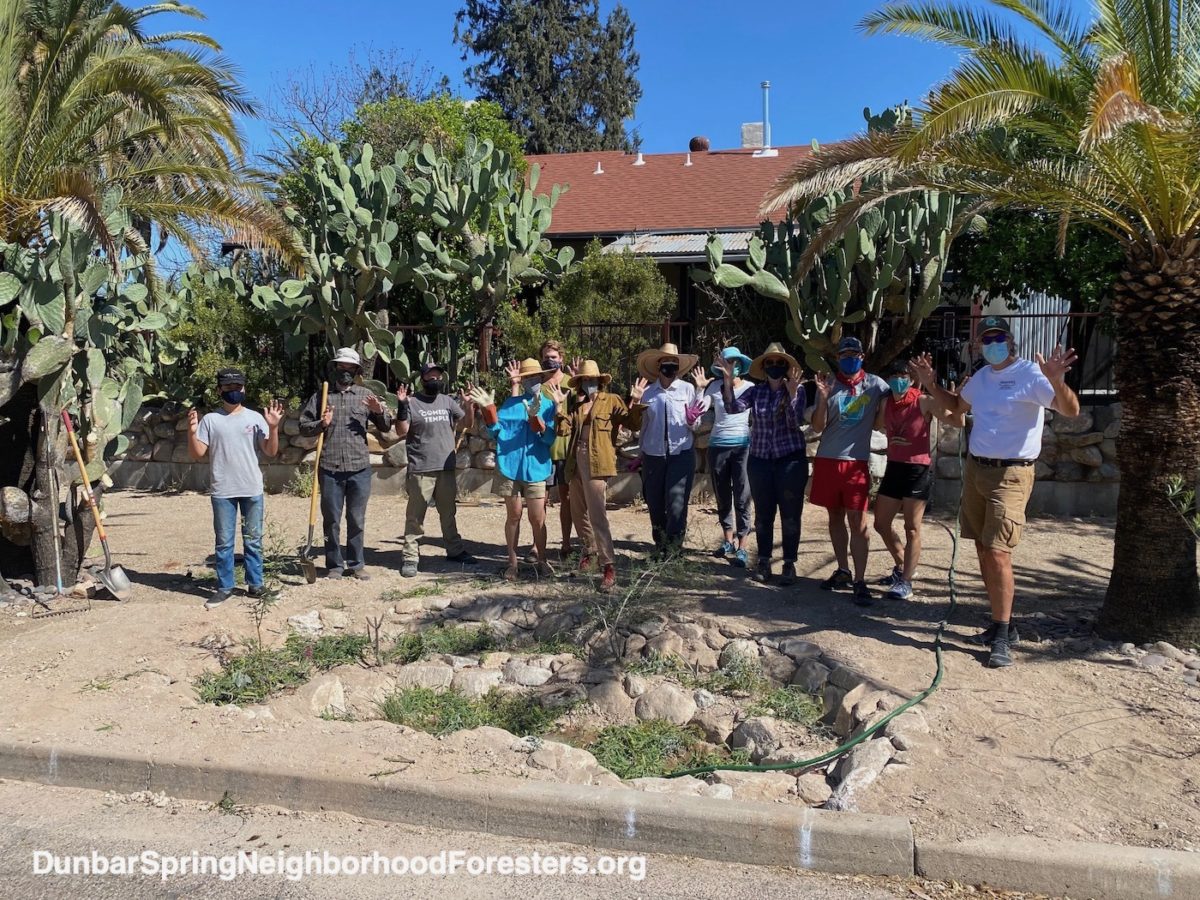Our 25th annual Dunbar/Spring Neighborhood Rain, Tree, & Food Forest Planting extended into the adjoining West University Neighborhood for a second year.
But as both neighborhoods are part of/share the same watershed, you could say we planted in just one waterhood.
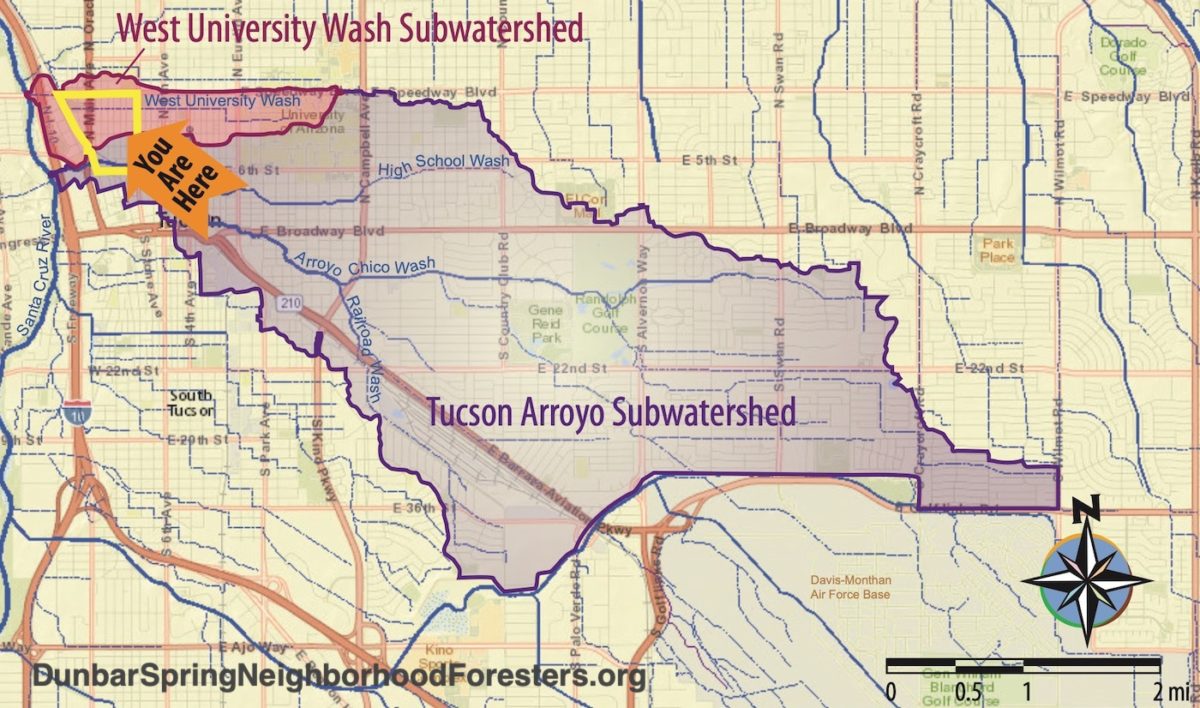
In total we planted:
• 30,000 gallons of stormwater (that will be captured in the constructed earthworks in an average year of rain) per year.
• 8 native trees that will grow to full size
• 8 bush trees (see here for an example)
• 86 native, multi-use understory plants
• Quarter pound of Wildlands Restoration’s Old Town Tucson Wildflower and Bosque del Bac Restoration seed mixes, along with neighborhood-grown coyote gourd seed.
Volunteers who helped plant:
38
Neighborhoods represented by the volunteers that helped plant:
9
Neighborhood blocks of public pedestrian paths pruned to regain full pedestrian access and mulch (cut-up prunings) for the water-harvesting basins:
6
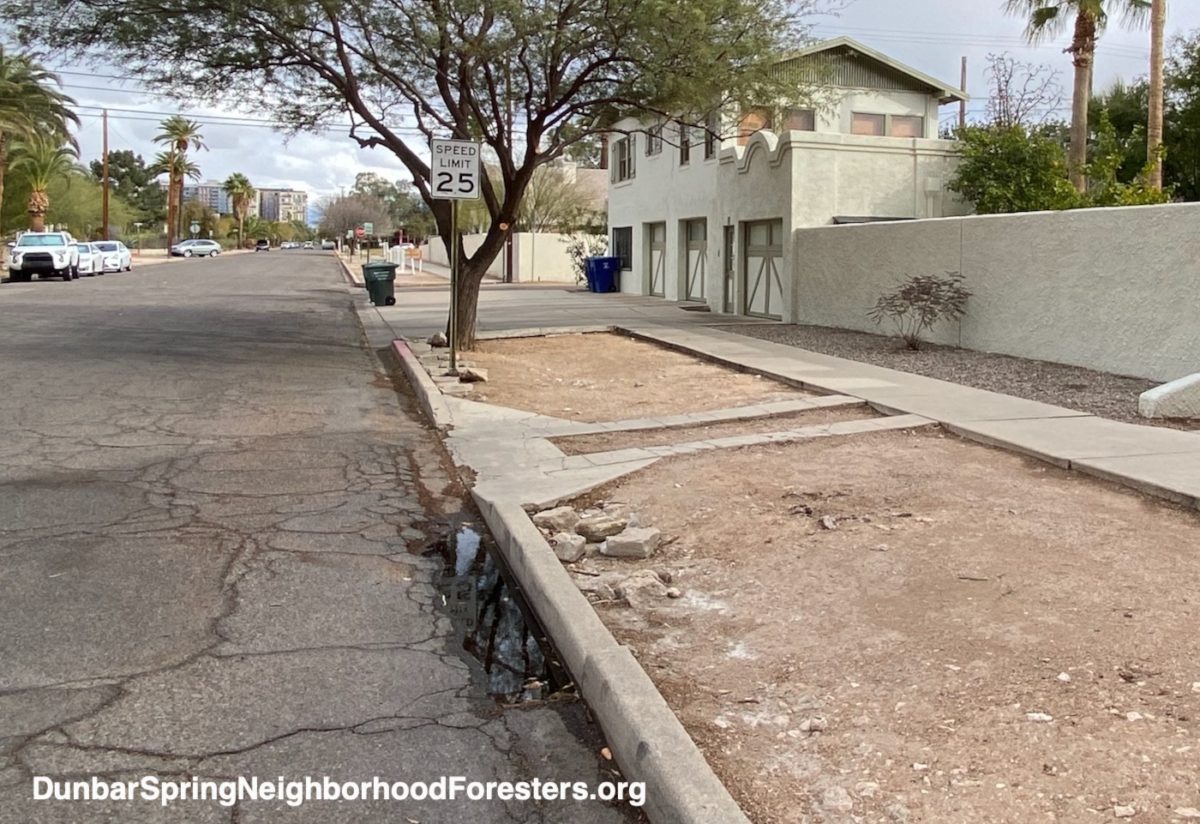
In West University Neighborhood.
Photo: Brad Lancaster
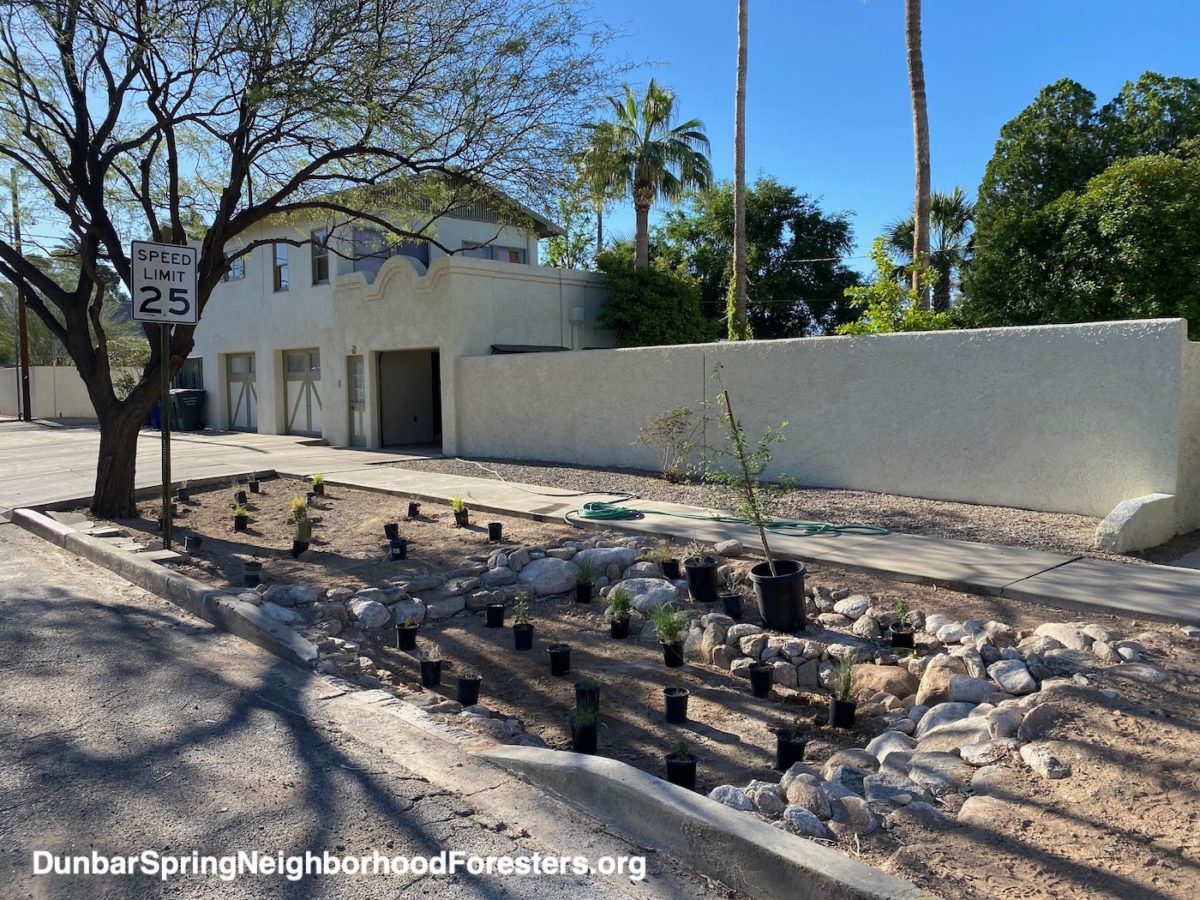
In a good storm, water typically overflows street over driveway on left into the to-be-planted area, so the rock bank stabilization was designed and installed to also act as a rock mulch rundown/one-rock dam hybrid (see chapter 10 of Rainwater Harvesting for Drylands and Beyond, Volume 2, 2nd Edition for more how-to info on this).
Water also enters the basin via the curb cut.
Plants placed where they are to be planted by volunteers. Curb repair yet to be completed.
Photo: Brad Lancaster
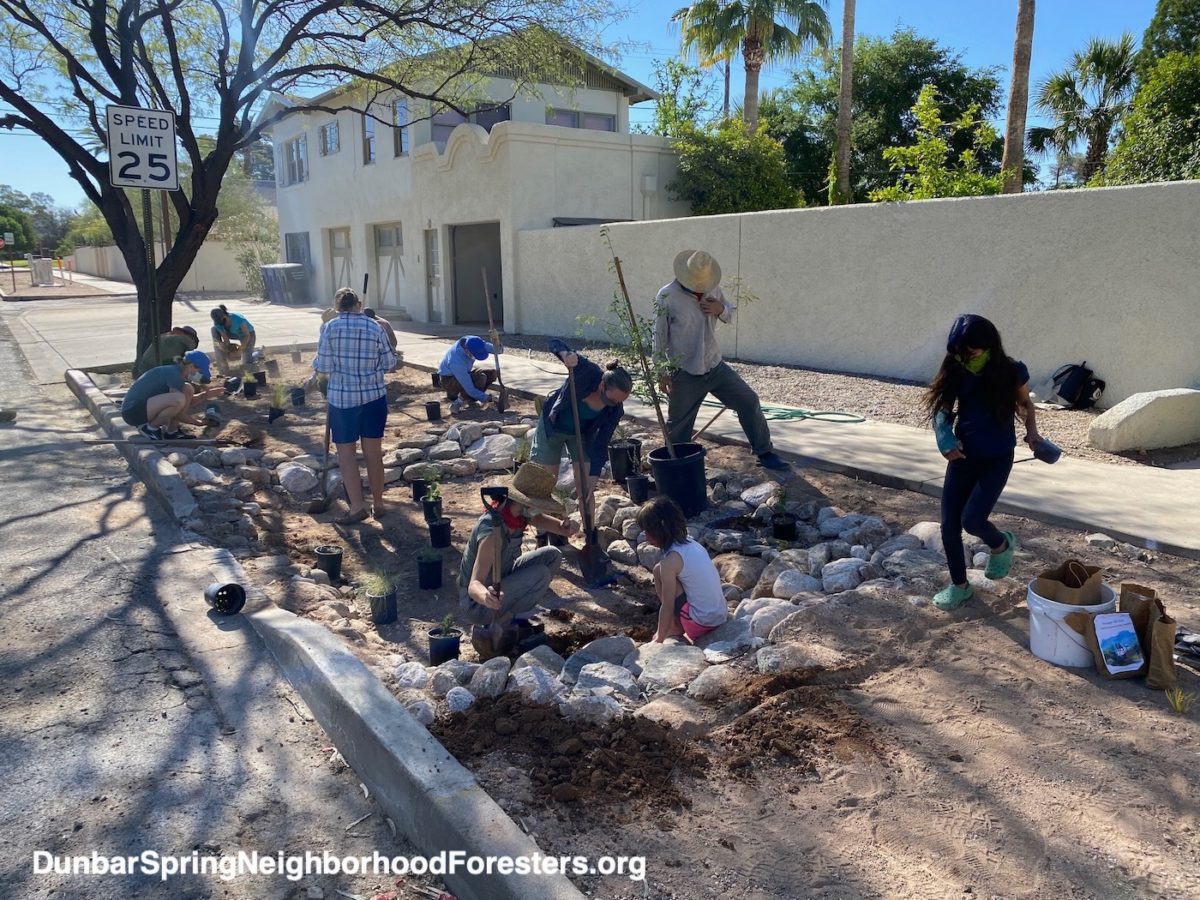
West University Neighborhood.
Photo: Brad Lancaster
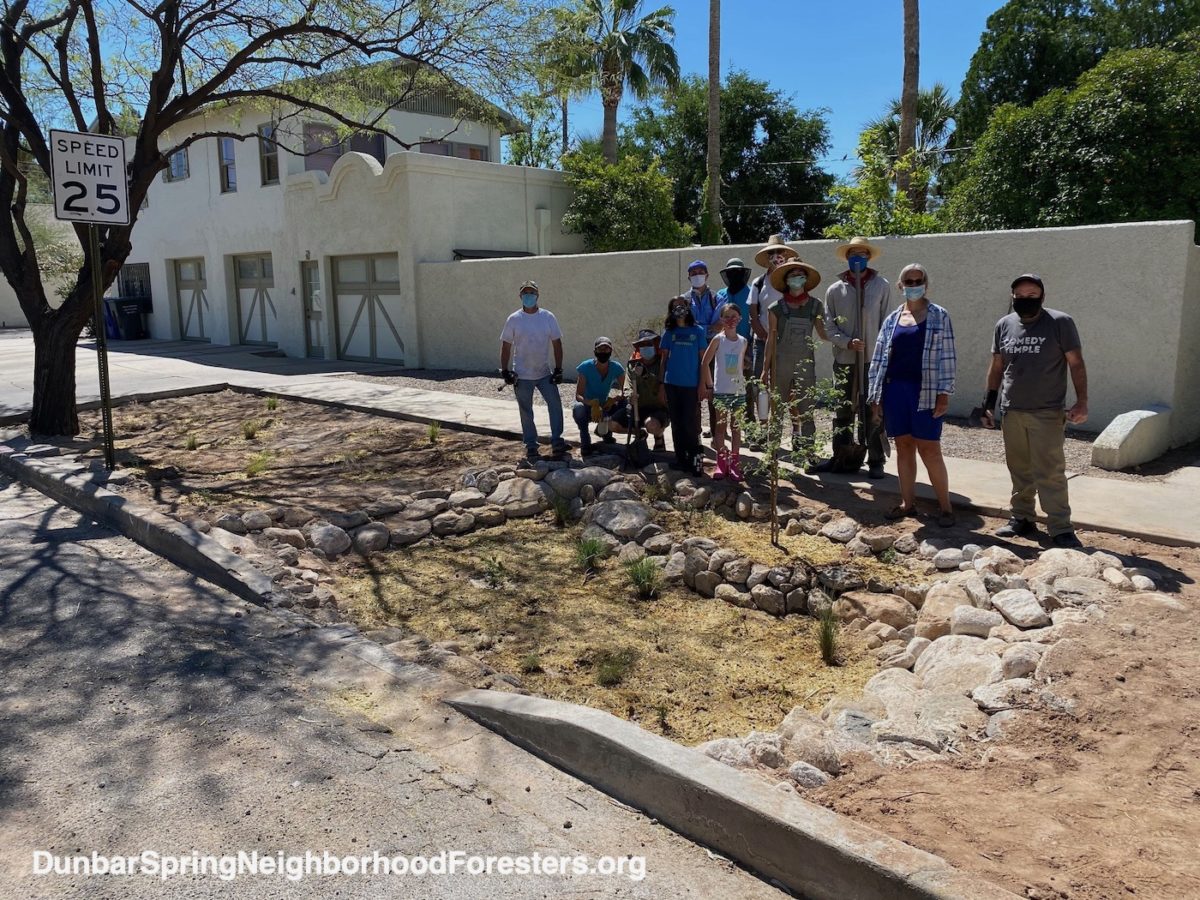
Photo: Brad Lancaster
Contractors we collaborated with to create the earthworks pre-planting, and the curb core holes post-planting:
• Little John Excavating
• Dryland Design
• Tucson Concrete Cutting
Local plant nurseries from which we sourced the plant material:
• Desert Survivors Native Plant Nursery
• Nighthawk Natives Nursery
• Spadefoot Nursery
• Wildlands Restoration

We primarily plant 1-gallon-size plants (though trees are typically 5-gallon-size) because the smaller size is less expensive, easier to plant (you dig smaller holes), and the smaller plants typically get established faster than larger plant.
Curb core was drilled three days after photo was taken.
Photo: Rodd Lancaster
Spread the word for next year
If you live within this waterhood share this with you neighbors, as we’ll be taking orders for the 2022 plantings late 2021. Check our Events page and Blog later this year for updates. Or better yet, sign up on our Contact page.
And if you live in this or a different waterhood, consider starting up a neighborhood forester effort in your neighborhood.
Water harvesting books for more info:
And for the best guides on doing it yourself see the books
Rainwater Harvesting for Drylands and Beyond, Volume 1 and Volume 2
Breakdown of the 2021 planting numbers by neighborhood:
Dunbar/Spring Neighborhood
Planted:
15,000 gallons of stormwater per year
7 trees that will grow to full size
2 bush trees
37 understory plants
5 curb cores
18 volunteers
West University Neighborhood
Planted:
15,000 gallons of stormwater per year
1 tree that will grow to full size
6 bush trees
49 understory plants
1 curb core (3 curb cuts were already existing)
20 volunteers

